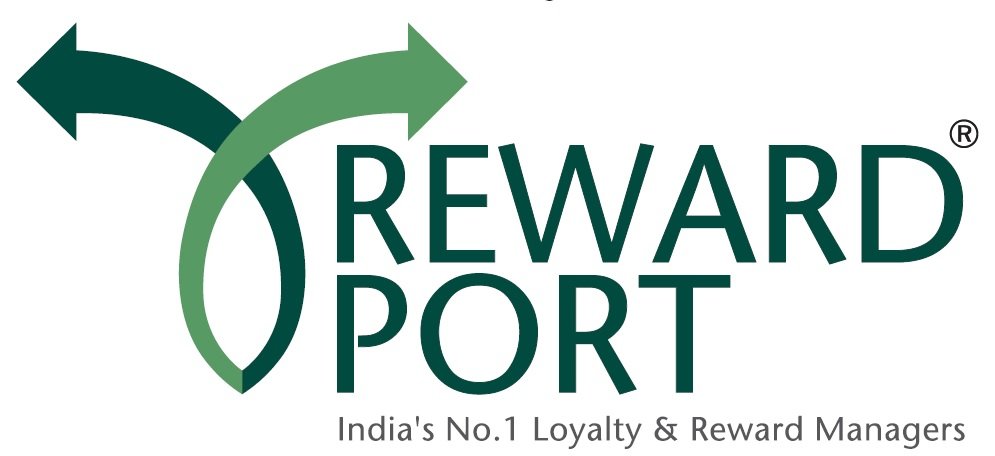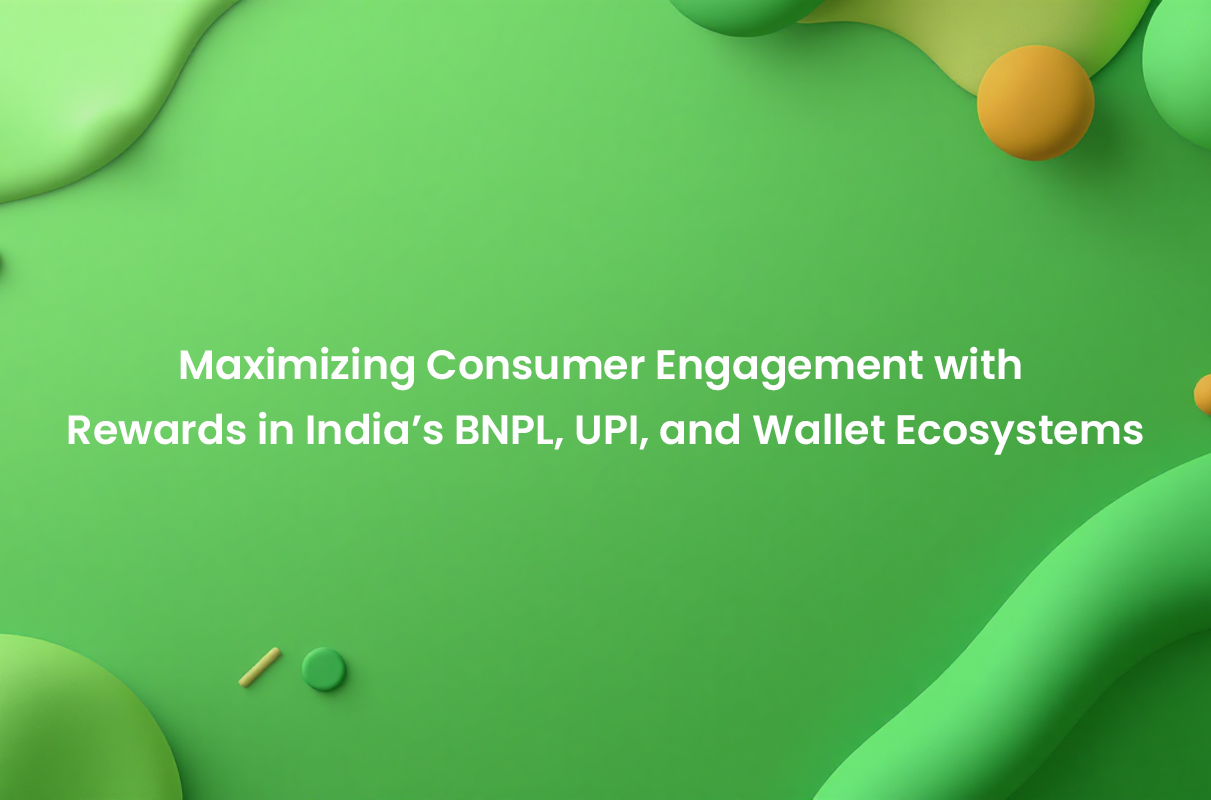
Maximizing Consumer Engagement with Rewards in India’s BNPL, UPI, and Wallet Ecosystems
Explore how rewards linked to BNPL, UPI, and wallets are transforming India’s fintech space with tiered, AI-driven, and embedded incentives.
Maximizing Consumer Engagement with Rewards in India’s BNPL, UPI, and Wallet Ecosystems
The rapid rise of fintech in India, notably Buy Now Pay Later (BNPL), Unified Payments Interface (UPI), and digital wallets, is reshaping consumer payment experiences. With UPI transactions exceeding 131 billion in fiscal year 2024 and BNPL gaining traction amid evolving regulations, rewards linked to these payment methods have become a critical lever for marketers, channel leaders, and HR professionals seeking to drive acquisition, repeat usage, and loyalty. At RewardPort, India’s specialist in consumer promotions and loyalty programs, we see this evolution as an opportunity to design smarter, targeted incentive programs using data-driven insights and embedded finance models.
India’s Fintech Landscape & Rewards Potential (2024-2026)
India’s digital payments ecosystem dominates fintech with UPI at the forefront, achieving over 15 billion monthly transactions by late 2024. Digital payments account for 42.9% of India’s fintech market share, supported by a 41% CAGR in transaction volumes since 2018. BNPL is rapidly emerging as a preferred credit alternative in e-commerce and offline retail, projected for significant growth through 2026, driven by seamless, integrated credit journeys embedded at checkout. Wallet apps, including Paytm, PhonePe, and Cred, command nearly 68% penetration among fintech users. Within such a landscape, rewards linked to these channels are moving beyond simple cashback offers to multi-layered, conditional, and embedded incentives that enhance consumer engagement and profitability. These trends present a fertile ground for RewardPort’s expertise in executing full lifecycle promotions—from acquisition through loyalty and referral—leveraging tailored reward catalogs and plug-and-play modules.
Emerging Reward Trends in BNPL, UPI, and Wallets
1. Tiered and Conditional Rewards
Cashback is evolving into tiered rewards structures that incentivize higher engagement and profitability. Consumers unlock benefits by reaching spending thresholds or achieving usage milestones, enabling brands to target and nurture high-value customer segments. For example, RewardPort’s cashback engine can configure tiered cashback with instant redemption to maintain consumer motivation. 2. Rewards as Revenue Generators
Leading issuers transform rewards programs from cost centers into profit centers. This happens through merchant-funded rewards, pay-by-points checkout integrations, and data-driven targeting. RewardPort’s RewardOne voucher engine supports seamless point redemption at e-commerce checkouts, helping clients subsidize rewards via merchant collaboration, boosting conversion while managing costs. 3. Embedded Finance and Invisible Rewards
The next wave of rewards leverages embedded credit solutions, such as no-cost EMIs within healthcare and travel ecosystems. These rewards take the form of instant discounts, bundled enrollments, or service upgrades directly integrated into user journeys. RewardPort’s Travel Club and other plug-and-play modules facilitate embedding lifestyle rewards, aligning fintech incentives with consumer needs in real time. 4. Agentic AI and Personalized Offers
Fintechs adopt AI-driven segmentation and real-time offer orchestration to personalize incentives. For instance, AI can trigger instant rewards on the fifth UPI transaction or offer tailored discounts to gig workers. RewardPort’s gamification engine and referral programs enable clients to create hyper-personalized campaigns that resonate deeply with diverse consumer cohorts.
Consumer Promotions in Practice: UPI and BNPL Reward Models
UPI rewards typically feature micro-cashbacks, scratch cards, and lottery-style incentives instantly credited at transaction time. These low-value, high-frequency rewards encourage habit formation and inclusion across Bharat segments. RewardPort’s expertise in Scratch & Win and instant cashback campaigns aligns perfectly with the mechanics of UPI promotions. In BNPL, rewards play a dual role: driving adoption while incentivizing responsible credit behavior. Structured incentives for timely repayments and usage consistency help providers manage risk while fostering loyalty. RewardPort’s tiered loyalty programs and multipliers can be customized for BNPL customer journeys to reinforce positive financial habits.
Channel and Employee Incentives Linked to Fintech Payments
Channel partners and employees increasingly engage with fintech-driven incentives that offer travel vouchers, multi-brand gift cards, or recharge benefits redeemable via wallets and UPI. RewardPort’s Channely platform integrates CRM and ERP systems to manage complex incentive schemes effectively, rewarding dealers for pushing fintech-based payment adoption and cross-selling.
RewardPort’s Strategic Advantage in Fintech Rewards
With over 11,000 programs and 7 million customers engaged annually, RewardPort stands at the forefront of executing fintech-related promotions that blend fun, attainability, and strategic business goals. Our modular approach—with Freebucks for points and instant redemption, Travel Club for aspirational rewards, and CineRewardz for entertainment incentives—matches the diverse expectations of Indian consumers in 2026 and beyond. We help clients harness data insights, AI capabilities, and integrated technology platforms to build rewards that are not just incentives but key growth drivers—enabling digital payment firms, banks, and merchants to thrive in the evolving fintech ecosystem.
As India’s fintech ecosystem matures, rewards linked to BNPL, UPI, and wallets evolve into sophisticated, embedded, and personalized experiences driving measurable business outcomes. RewardPort’s deep expertise in consumer promotions, loyalty program design, and channel incentives uniquely positions it to help fintech clients capitalize on these trends. By integrating strategic rewards with emerging technology and consumer insights, brands can ensure sustained engagement and growth in India’s dynamic digital payment landscape of 2026 and beyond.
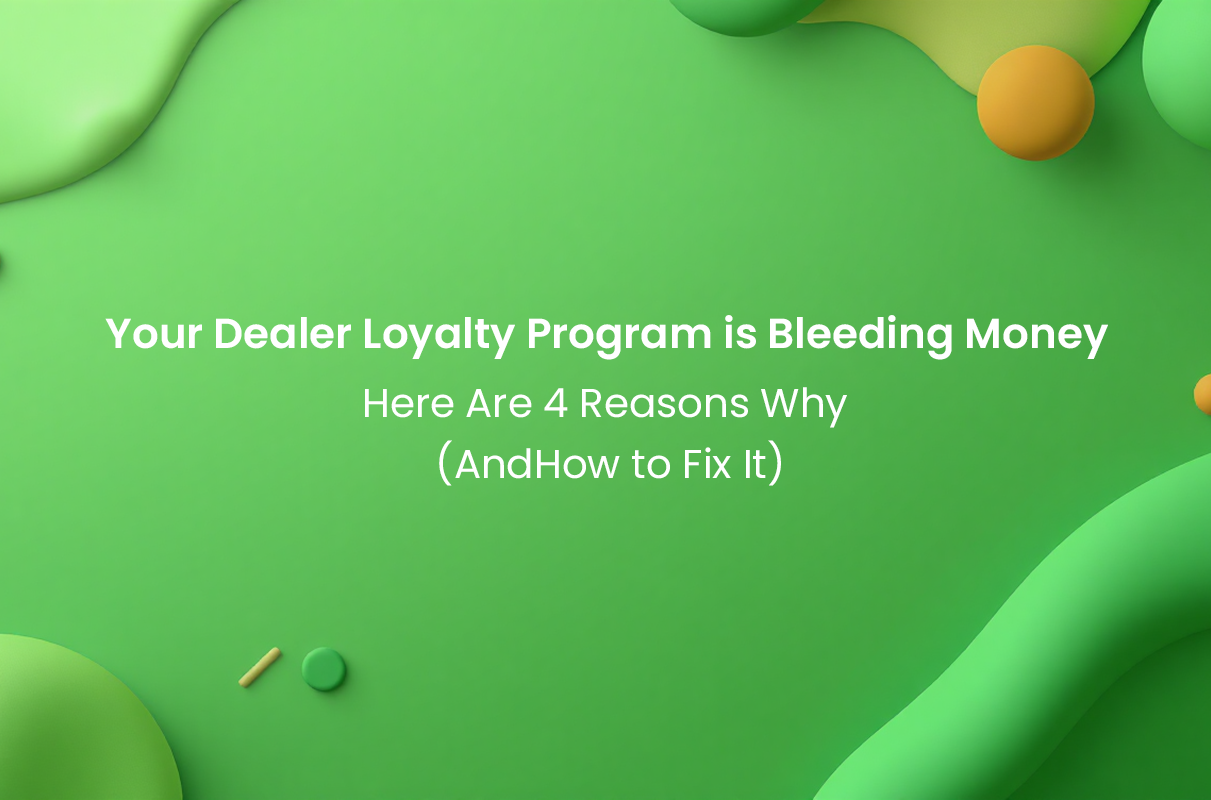
Your Dealer Loyalty Program Is Bleeding Money — Here’s What’s Broken
Your Dealer Loyalty Program is Bleeding Money. Here Are 4 Reasons Why (And How to Fix It).
The Myth of Modern Loyalty
For decades, the channel sales playbook has been dangerously simple: reward dealers with points, catalogs, and all-expenses-paid trips. It’s a common practice built on a fatal assumption—that these methods still work.
The hard truth is that traditional dealer loyalty is a myth. Most of these programs are obsolete, bleeding money without building loyalty. The motivations that drive your channel partners have fundamentally changed, and what they value today is radically different from what they valued even five years ago. If your program still looks like it did in 2018, you are already losing the channel war.
Here are the four reasons why your current program is failing and how you can build a system that wins.
1: You’re Using the Wrong Currency: Why Status Is More Valuable Than Points
The first reason your program is failing is that it’s built on a currency that has lost its value. Dealers are no longer motivated by accumulating points for a generic catalog or earning a spot on an annual trip. Their new drivers are immediate, emotional, and tied directly to their professional identity and success.
Today’s dealers are motivated by:
• Visibility: Being seen and acknowledged by the brand.
• Progress: Having a clear, real-time view of their performance.
• Instant reward: Receiving immediate validation for their actions.
• Prestige: Gaining status and recognition among their peers.
• Tools that grow business: Gaining an edge that helps them win locally.
This is a strategic shift from incentives to identity. The most successful brands understand these new equations: Identity > Incentives, Prestige > Free Gifts, and Visibility > Merchandise. Transactional gifts can’t compete with the power of public recognition and earned status.
Status is the real loyalty currency.
2: Your Tech Is Too Complicated: Why WhatsApp Beats Your Custom App
If your loyalty program requires dealers to download, learn, and regularly engage with a custom-built app, it has already lost the battle for their attention. Today’s dealers have zero tolerance for friction. They are busy running their businesses and will reward brands that respect their time with simple, streamlined processes.
You must embrace platforms like WhatsApp because they eliminate the friction your dealers refuse to accept. A WhatsApp-first simplicity can power everything from daily sales missions and live leaderboards to instant score updates and reward notifications without adding another complex tool to your dealers’ workflow.
The data is undeniable: WhatsApp-first systems see 5–8x higher adoption than app-based loyalty programs.
3: You’re Ignoring Your Biggest Asset: The Untapped Potential of Your Middle-Tier
A core failure of traditional loyalty programs is their structural inability to engage the majority of the network. The “Old Playbook” is both expensive & inefficient, ensuring the same top 5% of dealers take home the grand prize every year while the vast middle tier is ignored and demotivated. This outdated model relies on blind guessing rather than predictive forecasting.
A modern “Digital Performance Engine” flips this on its head. Instead of over-rewarding the same top performers, it focuses on strengthening and growing the middle 60% of the channel. This is where the most significant untapped potential lies.
Activating this neglected majority delivers staggering, measurable ROI:
• +12–22% sales growth
• +3–6x participation
• –35–60% cost reduction versus traditional rewards
By strengthening the entire channel, you create a broader, more resilient base for sustainable growth. If your loyalty program doesn’t grow revenue, it’s just theater.
4: It’s Not a Program, It’s a Game: If It’s Not Fun, It’s Dead
Is your channel actively talking about your loyalty program? If not, it’s dead. Most programs fail because of abysmal participation rates—often less than 20%—and a complete lack of excitement. They feel like administrative work, not a motivating experience.
To succeed, a program must create a “Performance Loop”:
Trigger → Action → Score → Reward → Recognition → Repeat
Gamification is the engine that makes this loop spin. By reframing performance as a game, you create engagement, habit, and excitement. High-impact gamified models include:
• Region vs Region scoreboard war
• Daily WhatsApp sales challenge
• Smart streak rewards
These models make participation fast, fun, and socially rewarding, transforming a stale program into a dynamic competition.
If it doesn’t feel like a game, participation dies.
The Choice is Yours—Evolve or Be Replaced
The landscape of channel loyalty has fundamentally shifted. The future does not belong to brands running outdated, transactional incentives. It belongs to those who build intelligent digital performance ecosystems that are real-time, automated, and performance-driven.
The brands that win will build digital excitement and reward real-time progress. Everyone else will be left fighting a war over margins.
If your dealer program still looks like 2018, your competitor will take your market in 2026. This is the moment to evolve.
Or be replaced.
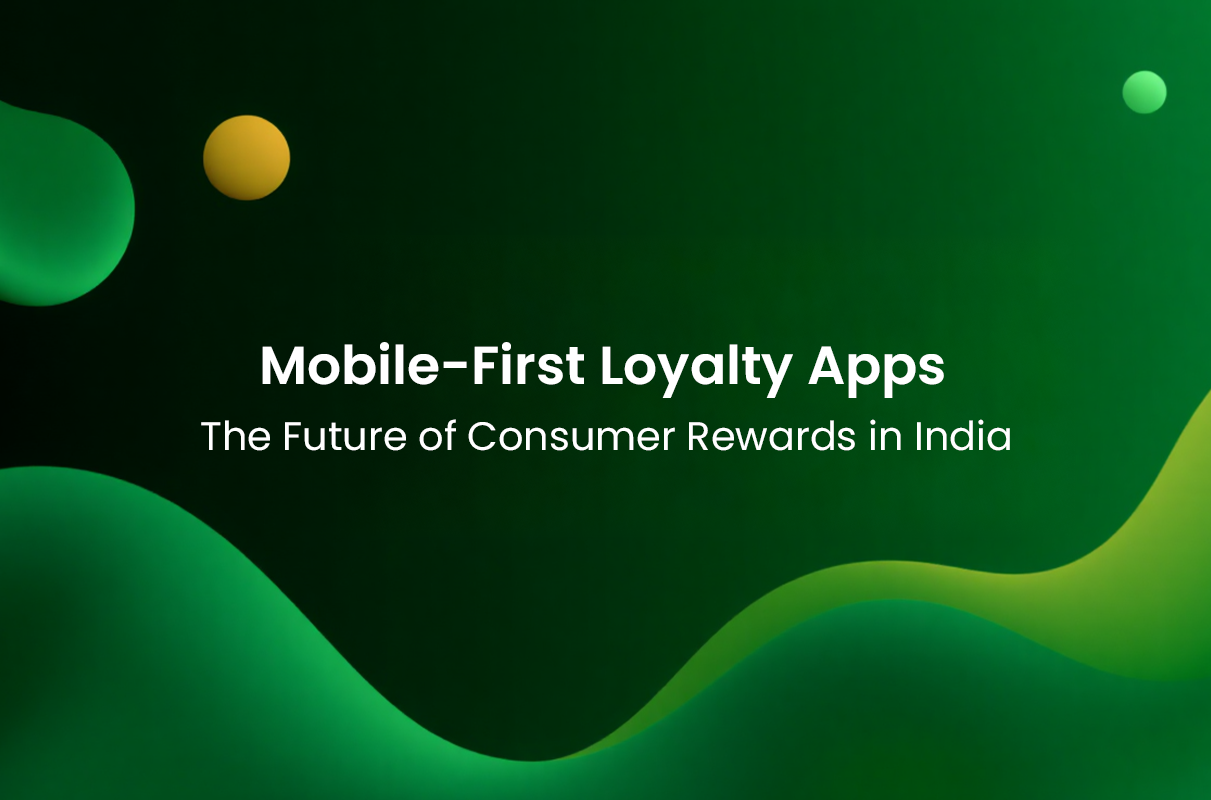
Mobile-First Loyalty Apps: The Future of Consumer Rewards in India
Discover how mobile-first loyalty apps are revolutionizing consumer rewards in India with instant, gamified, and experiential benefits.
Mobile-First Loyalty Apps: The Future of Consumer Rewards in India
India’s loyalty market has undergone a remarkable transformation, with mobile-first loyalty apps now dominating consumer rewards. By 2025, approximately 60% of loyalty program activities are digital or app-based, with 89% of interactions occurring on smartphones. This mobile-centric shift reflects a broader global trend but has unique nuances in the Indian context driven by soaring smartphone penetration, the ubiquity of digital payments, and consumer demand for instant gratification.
Market Growth and Mobile-First Dominance
The Indian loyalty programs market was valued at USD 4.79 billion in 2023 and is expected to grow to USD 5.37 billion in 2024, heading towards USD 8.02 billion by 2028 with a robust CAGR of about 10.5%. Mobile apps and digital platforms constitute the primary channel for loyalty program delivery, accounting for nearly 60% of the market share. This trend is supported by widespread smartphone adoption and a digital-first consumer mindset, making mobile apps the preferred interface for rewards and engagement over traditional methods such as SMS or physical loyalty cards.
Key Trends Driving Mobile-First Loyalty in India (2024–2026)
Among the most significant trends is the rise of real-time, instant, and gamified rewards. Indian brands increasingly incorporate instant win games, spin-the-wheel, and challenge-based rewards within mobile apps to boost participation and engagement. Additionally, AI-powered personalization leverages machine learning algorithms to deliver individualized offers and next-best-action nudges, enhancing user retention and program effectiveness. Blockchain and Web3 technologies are emerging as promising frontiers, with startups and leading brands experimenting with tokenized rewards and secure, transparent loyalty ecosystems. Furthermore, brands are shifting focus from traditional points-based rewards to delivering curated experiences—travel, wellness, entertainment—that offer emotional as well as transactional value. RewardPort has seen firsthand the impact of shifting from points to experiences, enabling programs to achieve over 150% increase in customer lifetime value and significant jumps in active engagement and retention by integrating mobile-first, omnichannel loyalty journeys.
Consumer Preferences: Instant, Digital, and Experiential Rewards
Indian consumers highly favor digital and instant rewards such as UPI cashback, mobile recharges, and e-vouchers due to their convenience and alignment with popular payment methods. Leading e-commerce and food delivery apps reinforce engagement through tiered memberships, exclusive partner offers, and cashback schemes. Experiential and wellness rewards are gaining traction, especially among premium segments. Wellness offerings span fitness memberships, health checkups, and mental well-being content, while aspirational experiences include curated travel and entertainment vouchers from RewardPort’s extensive catalog. Instant gratification remains critical; mobile-first reward engines empower brands to issue rewards instantly upon consumer actions like bill scans or purchase confirmations, satisfying the Indian market’s high expectations for real-time value.
Channel Partner and Dealer Incentives via Mobile Apps
Mobile-first loyalty solutions are also revolutionizing B2B engagement in India. Dealer and channel partner incentive programs now leverage apps for invoice uploads, real-time performance tracking, instant cashback, and point redemption for rewards such as travel packages or merchandise. RewardPort’s Channely platform exemplifies this trend, integrating with CRM/ERP systems to deliver seamless, automated incentive management that boosts trade partner loyalty and operational efficiency.
RewardPort’s Perspective and Solutions
At RewardPort, we recognize the mobile-first momentum driving the loyalty landscape in India. Our platform supports over 11,000 programs annually, offering plug-and-play modules like Gamification Engine, Cashback Engine, and WhatsApp Redemption Flows designed for India’s mobile-savvy consumers. Our curated Reward Catalog spans travel experiences (VacPac, AirPac), entertainment (movie tickets, OTT subscriptions), food, wellness, essentials, and lifestyle—providing brands with diverse, desirable rewards that resonate with India’s evolving preferences. Through case studies with clients ranging from FMCG to channel partners, we’ve demonstrated measurable uplifts in repeat purchase, engagement, and revenue by prioritizing mobile-first, experiential loyalty that delivers instant value and personalized consumer journeys.
Mobile-first loyalty apps are no longer a niche but a core business driver across India’s consumer and trade markets. For brands and marketers, the opportunity is clear: leverage mobile-first technologies, instant and gamified rewards, AI personalization, and experiential catalogs to build deeper, more profitable customer and partner relationships in 2026 and beyond.
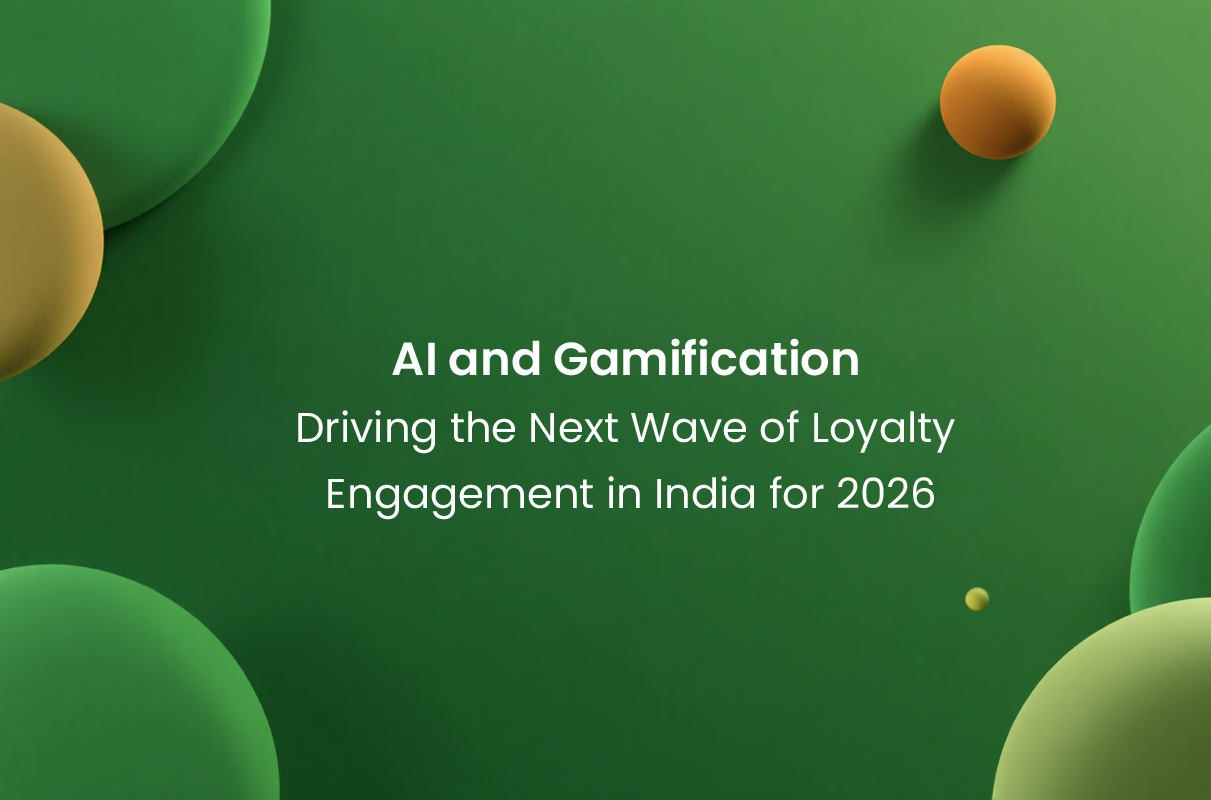
AI and Gamification: Driving the Next Wave of Loyalty Engagement in India for 2026
Explore how AI-powered gamification is revolutionizing loyalty engagement in India with hyper-personalization, predictive insights, and RewardPort’s expert solutions.
AI and Gamification: Driving the Next Wave of Loyalty Engagement in India for 2026
India’s loyalty market is poised for transformative growth, driven by the integration of artificial intelligence (AI) and gamification strategies. These technologies are reshaping consumer engagement, delivering hyper-personalized experiences that boost retention and lifetime value. RewardPort, India’s leader in consumer promotions and loyalty programs, is at the forefront of enabling brands to unlock these new potentials with our proven execution models and rich rewards catalog.
The Expanding Loyalty Landscape in India
In 2024, India’s loyalty program market was valued at over US$5 billion and continues rapid expansion. Gamification alone forms a critical pillar of this growth, with global market projections expecting it to reach USD 3.5 billion by 2024. Indian brands increasingly leverage AI-driven gamification to induce repeat purchases, deepen engagement, and reduce churn—key outcomes aligned with RewardPort’s track record across sectors including FMCG, retail, and e-commerce.
How AI Powers Personalized, Gamified Experiences
The fusion of AI with gamification allows brands to move away from one-size-fits-all loyalty schemes toward dynamic, data-driven journeys. AI analyzes customer behaviors and preferences to tailor game mechanics—points, tiers, challenges, and surprise rewards—that resonate personally with each user. This personalization drives up to 47% greater retention and a threefold boost in engagement compared to traditional programs. RewardPort’s proprietary Freebucks points and Pay system exemplify this approach, delivering instant gratification and seamless reward redemption. Our clients in India have implemented AI-curated campaigns that increased repeat purchase frequency by over 35% within months, proving the efficacy of smart gamified loyalty.
Predictive Analytics to Reduce Churn and Increase Value
AI-enhanced loyalty platforms predict at-risk customers and optimize the timing and type of reward outreach to prevent churn. For example, Indian grocery chains using RewardPort’s gamification engine introduced weekly challenges encouraging frequent visits and purchases, achieving 50% higher participation and significantly improved customer lifetime value.
Engagement Channels: Conversational AI and Digital Wallet Integration
Conversational AI bots and voice assistants are becoming frontline loyalty touchpoints, handling customer queries, reward redemptions, and personalized offers 24/7. Meanwhile, seamless integration with digital wallets—expected to surpass 500 million users in India by 2025—removes friction from redemption pathways and encourages consistent program participation.
RewardPort’s Strategic Perspective and Solutions
At RewardPort, we harness AI and gamification within varied execution methods: Gift with Purchase, Scratch & Win, Gamification, Contests, Referral programs, and more—carefully chosen to align with brand goals and target segments. Our expansive reward catalog, spanning travel, entertainment, food, health & wellness, and essentials, supports personalized incentive strategies proven to drive engagement and repeat sales. Our case studies underscore the impact: campaigns combining gamified points and tiered rewards demonstrate sustained loyalty buildup, while channel partner incentive programs powered by AI incentivize dealer engagement and sales uplift. The adoption of modular, API-driven platforms enables scalable, omnichannel loyalty experiences vital for modern Indian consumers.
Looking Forward: AI and Gamification in India’s Loyalty Future
By 2026 and beyond, loyalty programs that combine AI precision with engaging gamification mechanics will dominate India’s competitive consumer landscape. Brands investing in these technologies—and partnering with expert platforms like RewardPort—can expect to maintain higher retention rates, reduce churn, and unlock greater customer lifetime value.
The intersection of AI and gamification represents the next frontier in loyalty engagement in India. RewardPort’s expertise, flexible execution models, and comprehensive rewards catalog position us as the premier partner for brands seeking to capitalize on this wave. Through data-driven personalization, predictive insights, and immersive game mechanics, Indian marketers can transform loyalty from a transactional program into a powerful relationship builder for 2026 and beyond.
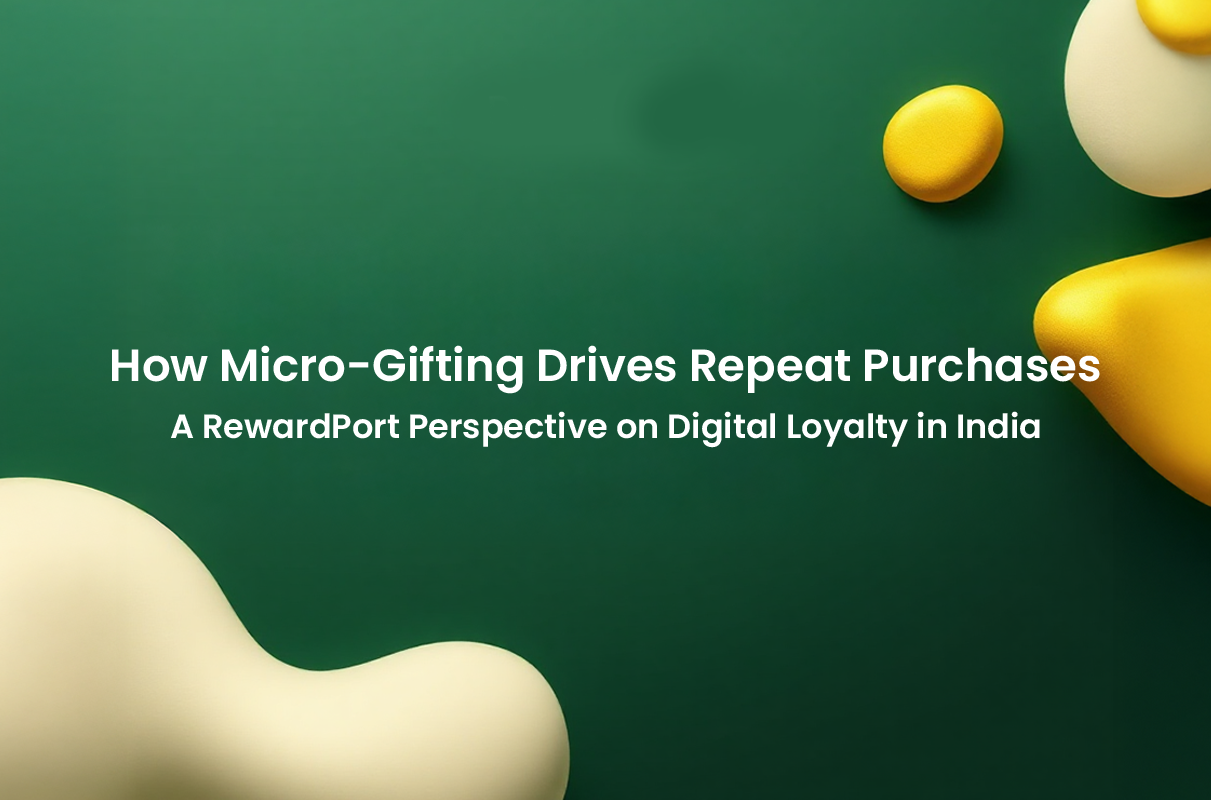
How Micro-Gifting Drives Repeat Purchases: A RewardPort Perspective on Digital Loyalty in India
Discover how micro-gifting with instant digital rewards boosts repeat purchases and strengthens loyalty for Indian brands and channel partners.
How Micro-Gifting Drives Repeat Purchases: A RewardPort Perspective on Digital Loyalty in India
In today’s fast-evolving Indian market, driving repeat purchases through consumer promotions and channel incentives has become more competitive than ever. Micro-gifting, involving small-value and instantly redeemable digital rewards, is emerging as a key strategy for brands to engage customers and channel partners effectively. Leveraging RewardPort’s specialist insights and execution expertise, this article explores how micro-gifting is revolutionizing loyalty programs and consumer retention across India in 2026 and beyond.
India’s Micro-Gifting Landscape and Market Dynamics
India’s gifting market is robust and expanding, valued at over USD 75 billion in 2024 with a steady growth trajectory towards USD 92 billion by 2030. The corporate gifting and loyalty segment is growing even faster due to the surge in digital adoption and personalized engagement initiatives. Micro-gifting — defined as small, meaningful digital rewards such as movie tickets, food delivery vouchers, OTT subscriptions, or instant cashback — fits perfectly with India’s digitally savvy consumers who demand convenience and immediacy.
Trends Propelling Micro-Gifting’s Influence on Repeat Purchases
Brands in FMCG, consumer electronics, and automotive sectors increasingly prioritize small-value digital incentives that drive trial, repeat purchase, and upsell. RewardPort’s campaigns show that consumers respond positively to instant redemption rewards, fueling immediate gratification. Personalization is another cornerstone: 68% of Indian consumers prefer brands that tailor rewards to their preferences, making points, tiers, and multipliers more appealing. Additionally, gamification incorporated into loyalty programs enhances engagement by tapping into consumers’ desire for fun and achievement. These experiential rewards combined with digital ease accelerate purchase frequency and brand loyalty.
RewardPort’s Micro-Gifting Execution Models and Case Insights
RewardPort’s diverse execution methods leverage the power of micro-gifting across the entire consumer lifecycle—from acquisition to loyalty. Gift-with-purchase campaigns with assured or scratch-and-win movie ticket rewards have driven measurable repeat purchases for leading FMCG brands. Channel partner incentive programs deploying digital voucher rewards motivate timely reporting and sales compliance, resulting in stronger dealer engagement. Our Freebucks point system and RewardOne gift voucher engine facilitate instant redemption experiences that keep customers and employees delighted and returning. Using our deep catalog—spanning travel, entertainment, food, and wellness vouchers—offers brands agility in delivering rewards that resonate deeply with Indian consumers.
Popular Rewards That Enhance Repeat Purchase Rates
Indian consumers show a strong preference for digital vouchers that combine convenience with aspirational value. Food delivery and pizza vouchers remain staples for youth demographics, while travel and wellness rewards align well with family audiences looking for experiential benefits. Instant cashback options also appeal broadly due to their simplicity and direct value perception.
RewardPort’s curated reward catalog, including movie ticket engines and multi-brand vouchers, ensures scalable options that cater to diverse consumer and partner segments, driving higher purchase frequency and loyalty.
Challenges and Growth Opportunities in Micro-Gifting
While micro-gifting is compelling, it demands careful balance to maintain reward attractiveness without inflating costs. Technological integration challenges persist, especially in syncing CRM/ERP data for hyper-personalized campaigns. However, emerging digital payment ecosystems like UPI facilitate easier reward distribution and redemption, unlocking rural and semi-urban market potential. With India’s digital infrastructure and consumer sophistication growing steadily, micro-gifting stands as a future-ready loyalty strategy that aligns with evolving buyer expectations.
Micro-gifting through instant, personalized digital rewards is a proven driver of repeat purchases and deeper consumer loyalty in India. RewardPort’s experience demonstrates that campaigns blending immediate gratification, tailored reward offerings, and integrated channel incentives deliver tangible business growth. As Indian brands look ahead to 2026 and beyond, embedding micro-gifting into their promotions and loyalty programs is key to staying competitive and relevant in a digitally empowered market.
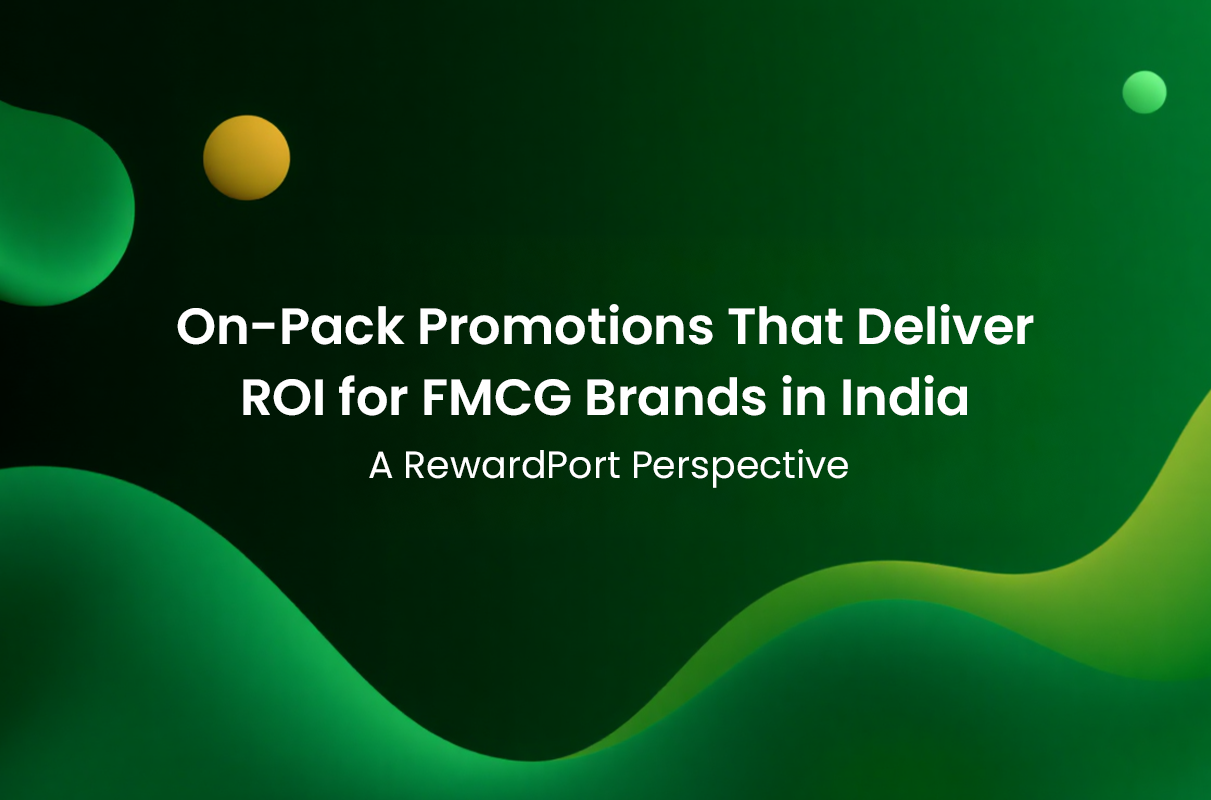
On-Pack Promotions That Deliver ROI for FMCG Brands in India: A RewardPort Perspective
Discover how on-pack promotions boost ROI for FMCG brands in India with digital rewards, gamification, and personalized loyalty programs.
On-Pack Promotions That Deliver ROI for FMCG Brands in India: A RewardPort Perspective
India’s fast-moving consumer goods (FMCG) sector is evolving rapidly, with brands increasingly leveraging on-pack promotions to drive sales and deepen customer engagement. For 2026 and beyond, delivering measurable ROI through these promotions requires a smart blend of digital integration, personalization, and strategic rewards. As specialists in consumer promotions and loyalty programs, RewardPort shares insights and best practices to help FMCG marketers, trade leaders, and channel partners unlock the full potential of on-pack campaigns.
The State of On-Pack Promotions: Driving Sales and Consumer Engagement
On-pack promotions remain a pivotal marketing investment, often accounting for 25-50% of trade marketing budgets in India. When executed well, these promotions can boost short-term sales by 15-25% and improve ROI by 10-15%. Modern FMCG brands now embed QR codes, instant redemption links, and gamified touchpoints into packs, enabling real-time tracking and higher consumer participation. This digital shift has led to redemption rate uplifts of 20-30% compared to traditional scratch cards or vouchers.
RewardPort’s Approach: Integration of Digital Rewards and Gamification
At RewardPort, we harness plug-and-play modules like Gamification Engine and WhatsApp Redemption Flow to transform on-pack promotions into seamless digital experiences. By incorporating instant digital rewards such as e-vouchers, movie tickets, and pizza coupons from our extensive catalog, brands see redemption rates soar to 50%, far outpacing typical cashback offers. Our campaign designs prioritize achievable thrills — games with assured prizes alongside grand draws — to ensure sustained consumer interest and repeat purchase behaviors. For example, brands that combined assured movie ticket vouchers with appliance giveaways observed significant penetration growth and stock acceleration.
Personalization and Loyalty for Enhanced Consumer Lifetime Value
Personalization is no longer optional. RewardPort supports AI-powered loyalty programs that link on-pack promotions to hyper-personalized offers and tiered rewards. This approach drives a 35% increase in repeat purchases and a 22% lift in customer lifetime value by tailoring experiences to individual buying patterns. Experiential rewards are emerging as a strong preference among Indian consumers, with wellness vouchers, dining experiences, and holiday packages outperforming traditional cashback incentives. This shift towards meaningful engagement fosters deeper brand affinity and long-term loyalty.
Engaging Retailers and Channel Partners with Incentives
ROI doesn’t stop at the consumer. RewardPort’s Channely platform integrates with brands’ ERP/CRM systems to deliver digital incentive programs for channel partners and dealers, including instant points redemption and gamified challenges. These programs have driven a 25% rise in retailer participation and a 15% sales uplift in client campaigns. By reducing incentive payout delays by 60% and offering tailored reward catalogs from multi-brand vouchers to travel packages, channel engagement deepens, ensuring alignment with sales goals and faster market coverage.
Future-Proof Trends in On-Pack Promotions
Looking ahead, Indian FMCG brands will increasingly adopt AI-powered personalization and sustainability-linked rewards, such as incentives for recyclable packaging returns. Expanding digital reward campaigns into tier II and III cities will also unlock new growth opportunities. RewardPort is positioned to scale these innovations, providing brands the flexibility to customize promotions that resonate with diverse consumer segments while delivering clear ROI.
On-pack promotions deliver strong ROI when integrated with digital technologies, personalized loyalty solutions, and compelling reward catalogs. By partnering with RewardPort, FMCG brands in India can leverage proven tools and strategies—from gamified consumer campaigns to channel partner incentives—to drive sales, repeat purchases, and long-term brand loyalty in 2026 and beyond.
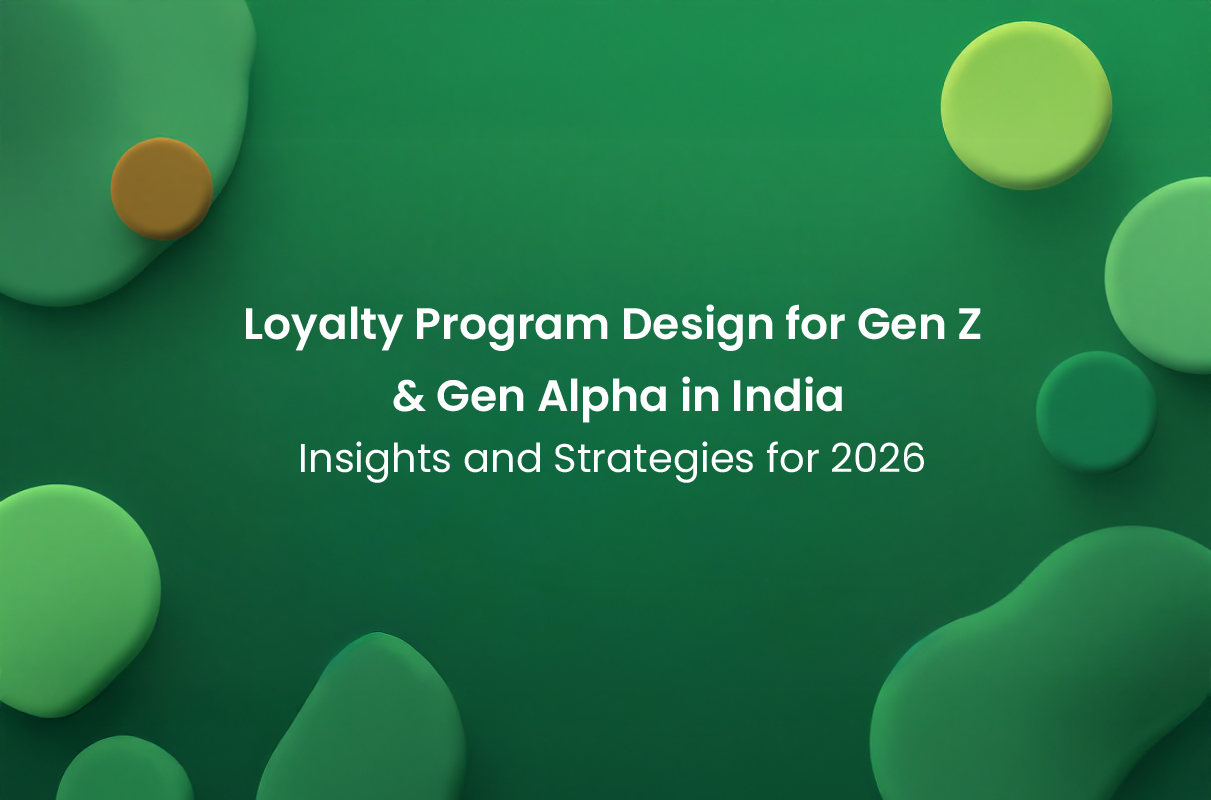
Loyalty Program Design for Gen Z and Gen Alpha in India: Insights and Strategies for 2026
Explore loyalty program design tailored for India’s Gen Z and Gen Alpha with personalized, experiential rewards and RewardPort’s proven solutions.
Loyalty Program Design for Gen Z and Gen Alpha in India: Insights and Strategies for 2026
The landscape of loyalty program design in India is evolving rapidly to meet the unique expectations of Gen Z and Gen Alpha consumers. These digitally native generations prioritize personalization, experiences, social values, and instant gratification over traditional points-driven rewards. For businesses and marketers aiming to engage these cohorts effectively, aligning loyalty strategies with their behavioral traits and preferences is critical. RewardPort, with its extensive experience in consumer promotions and channel incentives, offers a suite of plug-and-play solutions ideally suited to capturing this emerging opportunity.
Understanding Gen Z and Gen Alpha: Brand Relationships and Loyalty Trends
Gen Z (born approximately 1997-2012) and Gen Alpha (born 2010 onward) are reshaping brand loyalty with digital-first expectations. Over 90% of Gen Z in India prefer digital payments such as UPI, and about 70% discover brands primarily online before any in-store interaction. Gen Alpha, the youngest consumers, are influential household decision-makers, especially in food, tech, and entertainment purchases, with an appetite for interactive, immediate, and emotionally fulfilling experiences. Both cohorts expect brands to reflect their values and offer authenticity; approximately 75% of Gen Z are willing to pay a premium for sustainability-aligned products.
Key Loyalty Program Trends for Gen Z and Gen Alpha in India
A successful loyalty program targeting these segments must embrace these key pillars: – Hyper-Personalization and AI-Driven Engagement: Programs tailored to individual preferences and behaviors — offering bespoke rewards, recommendations, and content — resonate deeply with these consumers. For instance, AI-powered digital try-ons and personalized product suggestions create emotional connections. – Experiential and Instant Rewards Over Discounts: Both generations favor VIP event access, AR/VR engagements, exclusive digital content, or early product launches instead of mere cashback or traditional discounts. Experiences foster community and brand affinity. – Gamification and Social Community Elements: Incorporating branded games, challenges, leaderboards, and badges captures attention and drives repeated engagement, particularly as more than 80% of Indian Gen Z actively engage with mobile and video games. – Exclusivity and Youth-Focused Offers: Targeted student or youth offers that require quick verification to redeem create a sense of privilege and motivate loyalty program sign-ups. Time-limited or ‘for you only’ deals maximize perceived value. – Flexible Reward Choices & Payment Innovations: Offering options like cashback, instant digital redemption, experiential rewards, and integrating Buy Now Pay Later (BNPL) mechanisms cater to the flexible spending habits of these generations. – Values and Social Responsibility: Engagement is strengthened when loyalty programs integrate social causes, sustainability, or enable volunteering through mission-linked rewards — a key differentiator for socially conscious Gen Z.
RewardPort’s Perspective and Solutions for Engaging Gen Z and Gen Alpha
RewardPort’s expertise directly addresses these trends with scalable, India-first program modules and a rich reward catalog: – The Gamification Engine offers 100+ branded games ideal for engaging youthful consumers through fun challenges and community leaderboards. – Our RewardOne voucher engine supports personalized, exclusive reward rules and tracking that enable brands to deliver authentic, adaptive loyalty experiences. – For channel partners and employees, Channely provides digital badges, instant redemption options like UPI cashback, and gamified progress tracking, aligning well with young retail staff preferences. – RewardPort’s Travel, Entertainment, and Food vouchers align closely with Gen Z and Gen Alpha desires for experiential and emotional rewards, supported by extensive partnerships across India. Case examples inspired by broader client successes include campaigns combining assured instant rewards (like movie e-vouchers through CineRewardz), loyalty tiers with curated experiential prizes, and exclusive student offers verified via digital authentication, driving high ROI and repeat participation.
Designing Future-Ready Loyalty Programs in India
Integrating AI for predictive personalized offers, leveraging influencers and user-generated content, and creating seamless omnichannel experiences will be critical as Gen Alpha matures. Marketing to their parents with family-centric rewards further expands relevance. The shift from static point accumulation to dynamic, interactive, and values-driven programs is both an imperative and an opportunity for brands and channel partners. RewardPort’s plug-and-play loyalty modules empower marketers to innovate rapidly and cost-effectively, ensuring relevance from acquisition through loyalty and advocacy phases across youthful Indian markets.
For India’s marketers and channel leaders, designing loyalty programs that attract and retain Gen Z and Gen Alpha consumers entails a pivot toward digitally savvy, personalized, and experience-rich approaches. RewardPort stands at the forefront with proven tools and rewards that transform consumer insights into impactful loyalty journeys, driving sales, engagement, and lifetime value in the fast-evolving Indian marketplace.
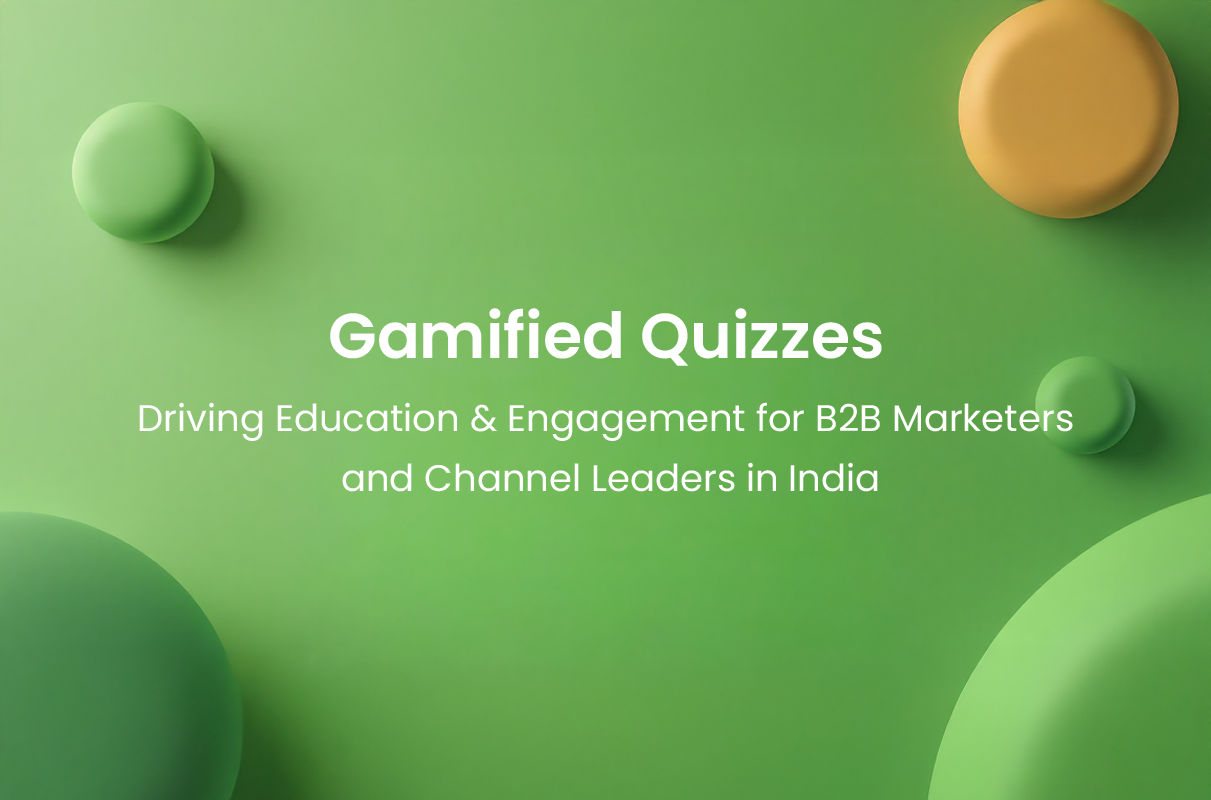
Gamified Quizzes: Driving Education and Engagement for B2B Marketers and Channel Leaders in India
Explore how gamified quizzes boost education, engagement, and loyalty through RewardPort’s innovative rewards and incentive programs in India.
Gamified Quizzes: Driving Education and Engagement for B2B Marketers and Channel Leaders in India
In today’s fast-evolving Indian market, gamified quizzes have emerged as a powerful tool to blend education with engagement, transforming how businesses train, incentivize, and retain their audiences. For B2B marketers, trade marketers, HR, and channel leaders seeking effective engagement strategies, gamification offers measurable results by motivating users through interactivity and rewards. At RewardPort, India’s specialist in consumer promotions and loyalty programs, we recognize gamified quizzes as a key lever to deliver impactful learning experiences and boost participation across education, channel incentives, and employee engagement.
The Rise of Gamification in India’s Education and B2B Ecosystems
India’s education and skilling markets are undergoing a transformation fueled by digital adoption and gamification trends. Gamified quizzes that incorporate point scoring, leaderboards, badges, and instant rewards are engaging learners and professionals alike. Market research forecasts estimate the Indian gamification in education market to grow substantially by 2030, driven by rising user engagement and technology penetration. Leading EdTech companies like BYJU’S and Quizizz demonstrate how gamified learning accelerates knowledge retention and motivation through competitive yet enjoyable quiz formats.
Simultaneously, in the B2B and channel partner landscape, gamified quiz campaigns linked with real-time rewards—such as digital cashbacks, vouchers, and experiential prizes—are becoming standard for dealer training and retail incentives. These campaigns foster frequent participation and deepen loyalty by making the learning process rewarding and fun. At RewardPort, our expertise in crafting these engaging incentive programs ensures clients harness the full potential of gamification for strategic growth.
Key Gamification Elements that Drive Engagement
Successful gamified quizzes rely on essential mechanics: immediate feedback, competing against peers via leaderboards, earning points and badges, and redeeming rewards quickly. RewardPort’s plug-and-play gamification engine enables creation of branded quiz challenges tied to our extensive rewards catalog ranging from movie tickets and food vouchers to wellness treatments and travel experiences. This variety ensures relevance across diverse audiences—from youth consumers to channel partners and employees.
Importantly, gamified quizzes provide a structured yet playful learning environment. For channel partners or employees, this means training modules are reinforced through quiz challenges that reward correct answers instantly, driving both learning and motivation. Consumer promotions integrating quiz-based contests deliver excitement augmented by assured and grand prizes, creating buzz and repeat participation.
RewardPort’s Integrated Solutions Enhancing Gamified Quiz Campaigns
RewardPort’s suite of solutions is built to empower marketers and HR leaders with technology and rewards that maximize the impact of gamified quizzes. Our Gamification Engine supports over 100 brandable games, including quiz modules designed for quick deployment and customization. By linking these quizzes to our RewardOne voucher engine or cashback mechanisms, clients seamlessly integrate incentive redemptions within the user journey.
Case studies from FMCG and telecom sectors reveal how RewardPort-enabled quiz incentives amplify dealer engagement and channel push. In contexts where employee learning and wellness is key, gamified quizzes paired with health and wellness rewards from our catalog have also improved uptake and loyalty. This synergy between content, gamification mechanics, and robust reward fulfillment sets RewardPort apart in India’s evolving incentive landscape.
Trends Shaping Gamified Quizzes in India (2025–2026)
Looking ahead, gamified quizzes will increasingly incorporate AI personalization to tailor challenges and rewards based on user behavior, further enhancing engagement and outcomes. Mobile-first design is critical for accessibility across India’s diverse digital user base. Integration of wellness, experiential, and travel incentives offers a broader appeal to families, employees, and channel partners.
Additionally, B2B enterprises are embracing gamified quizzes not just for training but also for upskilling and onboarding, using instant reward feedback loops to accelerate new knowledge adoption. The convergence of education, promotion, and loyalty ecosystems through quizzes positions RewardPort to meet these evolving demands with scalable, data-driven solutions.
Gamified quizzes stand at the intersection of education, engagement, and loyalty, delivering measurable uplift across India’s B2B marketing, channel incentives, and employee programs. RewardPort’s experience and technology empower businesses to harness gamification’s potential with tailored rewards and proven execution models. As India’s market evolves through 2026 and beyond, integrating gamified quizzes with strategic rewards will remain a cornerstone for successful engagement, training, and loyalty initiatives.
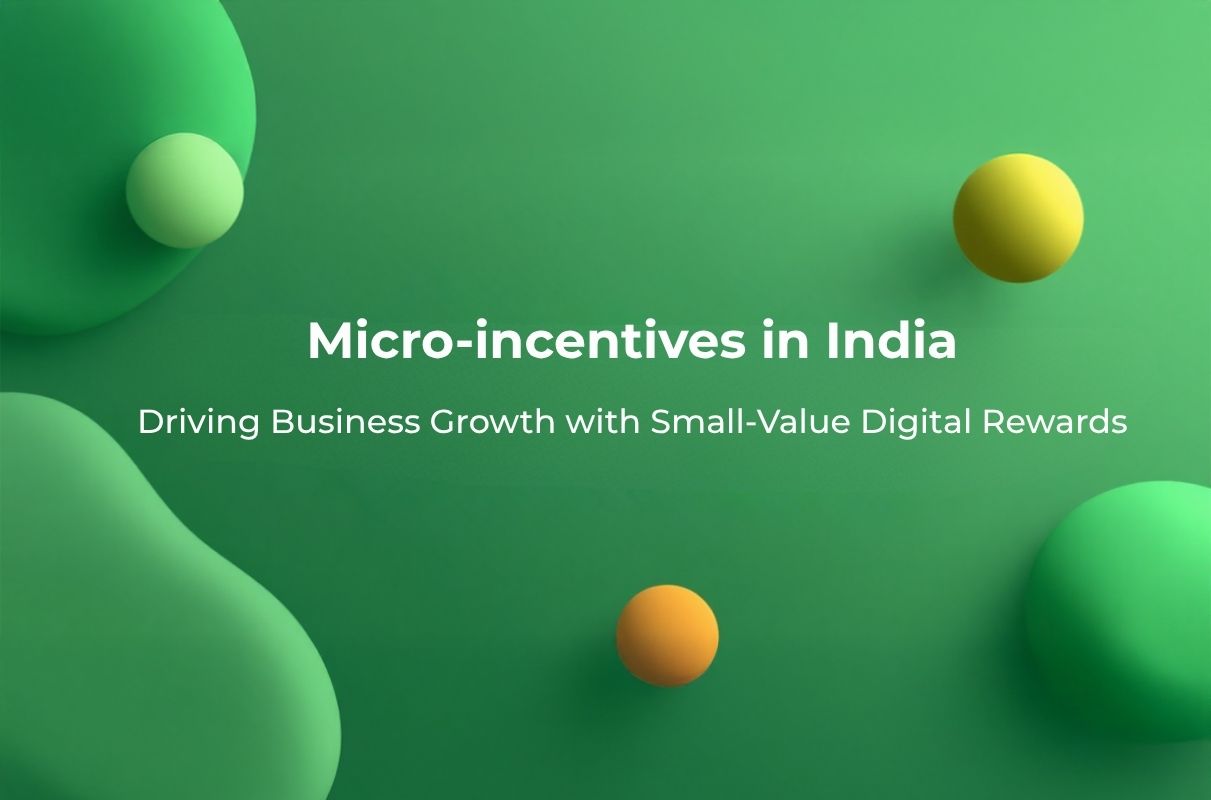
Micro-incentives in India: Driving Business Growth with Small-Value Digital Rewards
Explore how micro-incentives using small-value digital rewards empower Indian marketers to boost consumer engagement and channel loyalty efficiently.
Micro-incentives in India: Driving Business Growth with Small-Value Digital Rewards
In today’s competitive Indian market, brands, channel leaders, and HR professionals are constantly seeking innovative ways to engage their customers, partners, and employees. Micro-incentives—small-value digital rewards—have emerged as a powerful tool to motivate target audiences effectively and at scale. These instant, easily redeemable rewards enhance engagement, loyalty, and productivity while aligning perfectly with India’s rapidly digitalizing ecosystem.
Understanding Micro-incentives and Their Growing Relevance in India
Micro-incentives refer to low-denomination rewards such as cashback, instant vouchers, points, or experiential perks that organizations offer frequently to encourage specific behaviors and transactions. Unlike traditional high-value incentives, these small, quick-win rewards create steady motivation and continuous participation. In India, the surge of smartphone penetration and digital payment adoption has made micro-incentives an ideal engagement strategy for a vast spectrum of audiences from urban consumers to rural trade partners.
Key Trends Driving Micro-incentive Adoption
Research indicates a sharp rise in digital micro-incentive programs by brands especially in FMCG, consumer electronics, and automotive sectors. These programs leverage instant digital redemption, which satisfies the growing customer expectation for immediacy. For trade partners like dealers, distributors, and retailers, micro-incentives are increasingly linked not just to sales volumes but also to actions like timely reporting, stock display, and digital engagement. Moreover, wellness- and experience-based micro-rewards have become popular among younger urban consumers.
RewardPort’s Strategic Role in Micro-incentive Campaigns
As India’s specialist in consumer promotions, loyalty, and channel incentives, RewardPort offers comprehensive plug-and-play modules that simplify deployment of micro-incentive programs. Whether it is our Cashback Engine delivering instant or tiered cashback, the RewardOne gift voucher platform with real-time tracking, or the Gamification Engine featuring over 100 branded games, our solutions are designed to meld fun, ease, and strategic results.
RewardPort’s extensive rewards catalog plays a vital role in ensuring that micro-incentives resonate with the target audience. From travel experiences like AirPac and VacPac, to OTT subscriptions, food vouchers, wellness apps, and multi-brand gift vouchers, brands can customize rewards to meet diverse preferences and drive better engagement.
Real-World Impact: RewardPort Case Studies
Several brands leveraging RewardPort’s platforms have recorded significant uplifts by incorporating micro-incentives. For example, Bikaji’s festive QR scan-to-win campaign integrated multiple small-value rewards such as OTT subscriptions and pizza vouchers, resulting in a meaningful festive sales uplift. Similarly, the Aaradhana Foods campaign combined small-value cashback via QR inside packs with draws for premium appliances, successfully driving repeat purchases.
In the channel incentives space, RewardPort’s Dealer & Channel Partner Incentive Programs help businesses engage partners with micro-incentives that reward behaviors beyond sales volume, boosting overall trade engagement and loyalty. Our plug-and-play modules enable seamless integration with CRM/ERP systems to maximize efficiency and effectiveness.
Benefits of Micro-incentives for Indian Marketers and Channel Leaders
Micro-incentives offer several strategic advantages:
- Higher Engagement Frequency: Small rewards encourage frequent interaction and continuous motivation.
- Cost Efficiency: Smaller-value rewards spread across many participants reduce cost per engagement while delivering impactful results.
- Instant Gratification: Digital delivery coupled with instant redemption satisfies modern consumer and partner demand for speed.
- Personalization: Micro-incentives can be customized to different audience segments using RewardPort’s AI-driven targeting and flexible reward catalog options.
- Multi-channel Reach: RewardPort’s platforms support omnichannel deployment—digital apps, WhatsApp, QR codes, and offline games—to engage diverse Indian audiences.
Future Outlook: Micro-incentives Shaping 2026 and Beyond
The momentum for micro-incentives in India is set to grow in line with digital ecosystem expansion, government policy support for MSMEs, and evolving buyer behavior post-pandemic. Brands placing a premium on real-time, personalized, and experiential rewards powered by platforms like RewardPort will gain a competitive edge. The shift from traditional loyalty structures towards frequent, low-value rewards tailored for Indian consumers and trade partners will become the new normal.
Micro-incentives leveraging small-value digital rewards are revolutionizing how Indian marketers and channel leaders engage their audiences. With the right strategy and technology partner like RewardPort, businesses can drive higher loyalty, frequent engagement, and cost-effective campaign outcomes. Embracing micro-incentives is essential for success in India’s fast-evolving digital and retail landscape in 2026 and beyond.
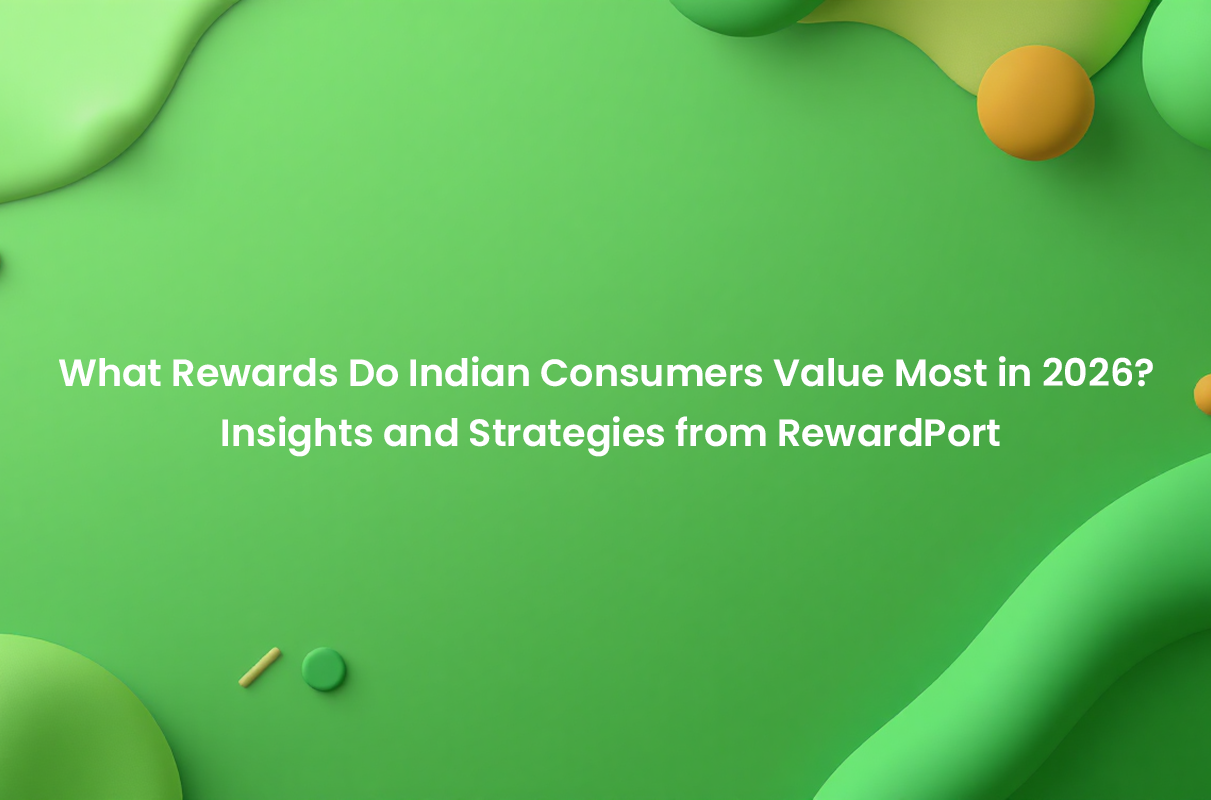
What Rewards Do Indian Consumers Value Most in 2026? Insights and Strategies from RewardPort
Discover the top rewards Indian consumers value in 2026, from cashback to experiential and green rewards, and how RewardPort drives engagement.
What Rewards Do Indian Consumers Value Most in 2026? Insights and Strategies from RewardPort
Indian consumers in 2026 seek rewards that combine personalization, immediacy, and experience. As India’s loyalty program market grows rapidly—expected to surge from USD 4.3 billion in 2025 to over USD 17 billion by 2035—understanding which reward formats resonate most strongly can help marketers, trade leaders, and HR/channel partners optimize engagement and drive business outcomes.
Cashback, Discounts, and Instant Digital Rewards: The Foundation of Consumer Preference
Across urban and rural India, cashback and discount incentives remain the top motivation for joining loyalty programs. Around 68% of urban consumers and 60% of rural consumers prioritize tangible, instant financial benefits, making cashback and assured discounts a critical element in campaigns. This aligns well with RewardPort’s Cashback Engine capabilities, which offer instant or tiered cashback models that appeal to mass-market shoppers and value retail consumers. These rewards are simple, transparent, and offer instant gratification—key to building trust and repeat purchase behavior.
Personalization and Technology Amplify Reward Impact
Indian consumers increasingly expect offers tailored to their preferences and purchase histories. AI-driven personalization boosts program effectiveness by 35-47%, increasing repeat buys. RewardPort’s Freebucks points and Pay system facilitates personalized redemptions, enabling targeted promotions across consumer segments. Furthermore, integration with fintech channels such as BNPL (Buy Now, Pay Later), UPI, and mobile wallets—strong drivers of India’s digital payments adoption—streamlines redemption and reward access, enhancing user convenience and engagement.
Experiential Rewards Are Gaining Traction, Especially Among Urban and Premium Segments
Beyond monetary incentives, experiential rewards such as travel, dining, entertainment, and wellness offerings attract discerning consumers in metros like Mumbai and Bengaluru. RewardPort’s extensive travel catalog (AirPac, VacPac) and entertainment rewards (movie tickets via CineRewardz, OTT subscriptions, and dining vouchers) align perfectly with this trend. Such rewards deepen emotional engagement and brand loyalty, especially when offered as exclusive tiers or milestone incentives.
Sustainability: Green Rewards Create New Loyalty Imperatives
Environmental consciousness is reshaping Indian consumer expectations. Approximately 64% prefer brands offering sustainability-linked rewards, like points for eco-friendly packaging returns or green delivery choices. FMCG brands leveraging such green loyalty initiatives have reported retention boosts up to 20%. RewardPort supports these green rewards with catalog options and customized rules in RewardOne and CRM integrations via Channely to embed sustainability into loyalty programs seamlessly.
Channel and Dealer Incentive Programs: Tiered Milestones and Engagement
In the B2B and channel space, tiered and milestone-based rewards remain critical for motivating dealer and partner networks. RewardPort’s Channely platform integrates with ERP/CRM systems to automate dealer incentives, improve partner engagement, and increase timely payments, backed by proven case studies showing performance uplifts and loyalty growth. These programs combine travel incentives, multi-brand gift vouchers, and instant redemptions tailor-made for channel partners’ preferences.
The Digital Convenience Factor: Seamless Omni-channel Redemptions
Modern Indian consumers expect a frictionless omnichannel experience—earning and redeeming rewards via apps, digital wallets, and in-store interactions. RewardPort’s WhatsApp Redemption Flow, QR scan-to-win, and digital gift voucher engines create seamless user journeys that reduce redemption friction, boost participation, and enhance customer satisfaction.
RewardPort Perspective: Building Integrated, Insight-Driven Reward Campaigns for 2026 and Beyond
As India’s rewards ecosystem grows more complex, RewardPort advises clients to focus on multi-layered campaigns balancing: – Immediate cashback and discount-based incentives for mass appeal – Experiential and wellness rewards for premium and urban segments – Green and sustainable rewards for growing eco-conscious consumers – B2B tiered programs for channel and partner loyalty – Advanced digital integration for seamless customer journeys RewardPort’s plug-and-play modules and extensive catalog enable marketers to tailor promotion lifecycles—from acquisition to referral—leveraging analytics and real-time redemption data to optimize ROI and engagement continuously.
In 2026, Indian consumers’ reward preferences are shaped by a blend of instant value, experiential depth, sustainability, and digital convenience. RewardPort’s comprehensive solutions, vast rewards catalog, and success stories reflect these dynamic trends, empowering marketers and leaders to craft high-impact, consumer-centric loyalty and incentive programs tuned for the future Indian market.
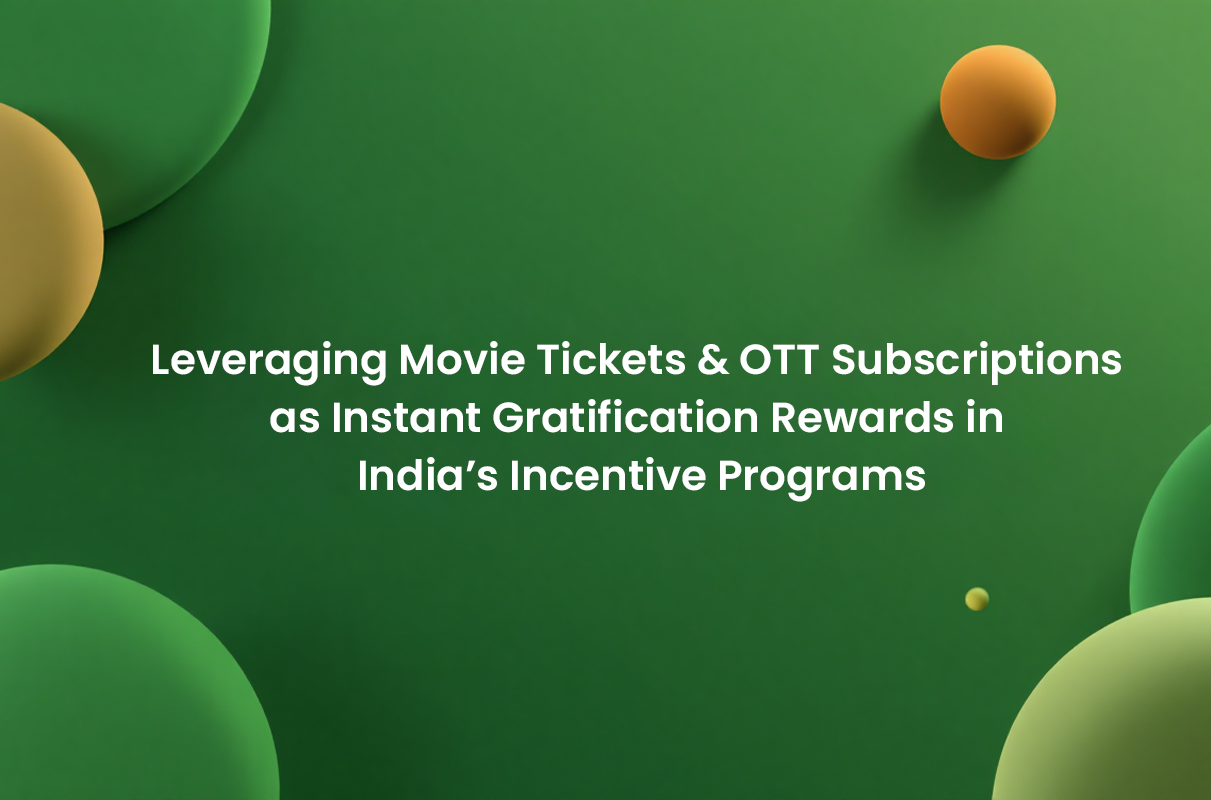
Leveraging Movie Tickets & OTT Subscriptions as Instant Gratification Rewards in India’s Incentive Programs
Explore how movie tickets and OTT subscriptions drive instant gratification in Indian loyalty and channel incentive programs with RewardPort’s expert insights.
Leveraging Movie Tickets & OTT Subscriptions as Instant Gratification Rewards in India’s Incentive Programs
In India’s dynamic consumer and channel incentive landscape, movie tickets and OTT (Over-The-Top) subscriptions have emerged as powerful instant gratification rewards. Their seamless digital delivery, broad cultural appeal, and strong experiential value position them as go-to incentives across B2C and B2B marketing, trade promotions, loyalty programs, and employee rewards. As we move through 2026, these rewards are driving higher engagement, accelerating trial and repeat purchase, and fostering loyalty with greater immediacy than traditional gifts.
The Rising Popularity of Movie and OTT Rewards in India
Cinema and streaming entertainment hold a deep foothold in Indian consumer culture. Multiplex chains like PVR INOX have introduced subscription models such as the “Passport” program, enabling consumers to watch multiple movies monthly at affordable rates, boosting cinema attendance especially on weekdays. Simultaneously, OTT platforms such as Hotstar, Jio Cinema, and Amazon Prime Video collectively command tens of millions of subscribers, illustrating the massive demand for digital video content. Loyalty and credit card programs increasingly bundle free or cashback movie tickets and OTT subscriptions as part of joining bonuses, milestone rewards, and purchase-linked promotions, amplifying perceived value and instant gratification.
RewardPort’s Perspective: Aligning with Consumer and Partner Expectations
At RewardPort, we recognize that instant gratification is central to engagement in today’s fast-paced Indian market. Movie tickets and OTT subscriptions deliver an emotionally resonant reward experience with quick redemption and wide applicability—perfect for consumer promotions, channel partner incentives, and employee recognition. Our plug-and-play modules enable brands to integrate such rewards effortlessly into campaigns: – Gift with Purchase & Scratch & Win campaigns leverage movie and OTT vouchers to incentivize trial and repeat purchases with assured instant wins. – Loyalty and Tiered Programs use OTT subscriptions and movie tickets as aspirational rewards, motivating continued brand engagement. – Channel Partner Incentives feature digital entertainment rewards, which simplify logistics while enhancing partner motivation and satisfaction. Our extensive reward catalog includes access to 4,500+ cinema screens, OTT subscriptions across leading platforms, and entertainment-focused vouchers, allowing campaigns to be finely tailored to diverse audience segments including youth, families, and business partners.
Case Study Insights and Proven Impact
Several programs facilitated by RewardPort demonstrate the effectiveness of movie and OTT rewards. For instance, large FMCG campaigns used scratch-and-win movie ticket vouchers to boost festive season sales and repeat purchase rates significantly. In dealer incentive programs, digital OTT and movie ticket codes replaced cumbersome merchandise rewards, shortening redemption cycles and improving partner engagement. Such rewards consistently generate high activation and redemption rates, helping brands meet KPIs for acquisition, upsell, and loyalty more cost-effectively than traditional incentive models. The emotional connection of entertainment combined with ease of digital delivery is a unique strength of these rewards.
Market Considerations and Regulatory Environment
While state-level levies like Karnataka’s 2% cess on movie tickets and OTT subscriptions have introduced marginal cost considerations, the overall appeal of these instant gratification rewards remains strong. Brands and marketers strategizing reward budgets will continue favoring entertainment-based incentives for their scalability, pan-India relevance, and consumer affinity.
In summary, movie tickets and OTT subscriptions stand out as compelling instant gratification rewards in India’s evolving incentive ecosystem. Their widespread cultural popularity, combined with RewardPort’s digital-first delivery platforms and comprehensive reward catalog, empowers marketers to design effective, scalable programs that resonate with consumers, channel partners, and employees alike. As India’s entertainment economy continues to grow, integrating these rewards into loyalty, promotional, and incentive strategies will be critical for sustained competitive advantage.
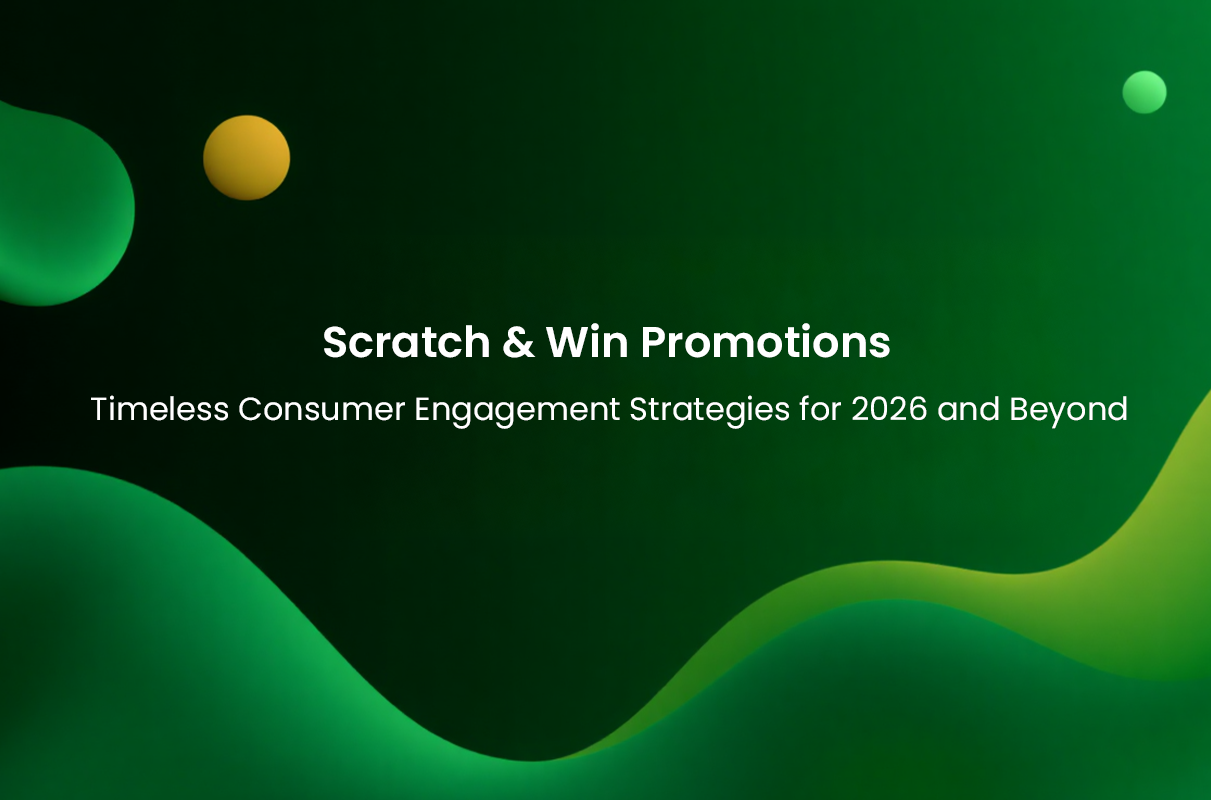
Scratch & Win Promotions: Timeless Consumer Engagement Strategies for 2026 and Beyond
Explore how scratch & win promotions remain a top consumer engagement strategy in India, evolving with digital innovation and RewardPort solutions.
Scratch & Win Promotions: Timeless Consumer Engagement Strategies for 2026 and Beyond
Scratch & win promotions have proven their enduring appeal across industries in India, continually evolving while remaining a go-to consumer engagement tactic. As we approach 2026, these promotions blend tradition with technology, driving engagement not only among consumers but also among channel partners and employees. RewardPort’s expert understanding and execution of scratch & win campaigns uniquely position brands to harness this dynamic method effectively.
The Enduring Popularity of Scratch & Win in India
Scratch & win promotions thrive on their simplicity and instant gratification. Consumers love the thrill of uncovering a surprise reward, which motivates trial, repeat purchases, and brand loyalty. From FMCG to consumer durables and automotive sectors, such campaigns have remained relevant due to their flexibility and adaptability. Even with rising digital transformation, physical scratch cards maintain traction, especially in regions or demographics with limited digital access.
Digital Transformation and Enhanced Engagement
The rapid penetration of smartphones and mobile internet in India has opened new avenues for scratch & win campaigns. Digital scratch cards and QR-code-based versions now allow seamless participation, reducing costs and fraud risk. RewardPort’s integrations with WhatsApp redemption flows and instant digital rewards facilitate real-time engagement and data capture, essential for personalized marketing. Leveraging AI and analytics, brands can optimize reward structures, predicting customer preferences while preventing abuse. This evolution has broadened scratch & win campaigns beyond consumer sales to dealer incentives and employee reward programs, creating multi-tier engagement strategies.
Expanding Reward Options for Diverse Audiences
Market preferences have shifted toward experiential and wellness rewards besides traditional cashbacks and gift vouchers. RewardPort’s extensive catalog, featuring travel experiences (VacPac, AirPac), OTT subscriptions, dining and entertainment vouchers, and health & wellness memberships, enables brands to tailor incentives that resonate with varied target segments. For instance, travel incentive programs have been effectively deployed to motivate channel partners, while instant food and movie vouchers appeal strongly to younger, urban consumers. Such thoughtfully curated rewards foster deeper loyalty and encourage repeat interactions beyond the promotional period.
Operational Excellence and Regulatory Navigation
While digitization mitigates operational challenges like slow prize fulfillment and opaque processes, navigating India’s complex lottery regulations requires expertise. RewardPort’s experience ensures that campaigns are designed within legal frameworks, using assured win models rather than gambling, thereby avoiding regulatory conflicts. Our plug-and-play modules like Freebucks for points and instant redemption and RewardOne voucher engines simplify campaign execution, ensuring compliance and scalability across states and urban-rural divides.
Case Studies Highlighting Impactful Execution
Among many successful collaborations, FMCG brands leveraging scratch & win for repeat buyer engagement have noted significant uplift in penetration and loyalty. Paint sector campaigns, integrating gamified dealer incentives with experiential rewards, demonstrate how scratch & win mechanics drive channel push effectively. Digital-era campaigns that combine WhatsApp scratch-to-win with instant cashback or wellness rewards show strong traction in tier 2 and 3 cities, overcoming traditional limitations and boosting participation rates.
Future Outlook: Integrating Scratch & Win with Loyalty Ecosystems
The future of scratch & win promotions lies in omnichannel loyalty and gamification ecosystems. RewardPort’s approach blends scratch & win with loyalty programs—incorporating tiers, multipliers, and referral incentives—that sustain engagement over customer journeys. Data-driven reward personalization will further refine impact, ensuring relevance and minimizing reward fatigue. As consumer expectations evolve, integrating diverse reward types, seamless digital experiences, and regulatory clarity will keep scratch & win relevant and effective.
